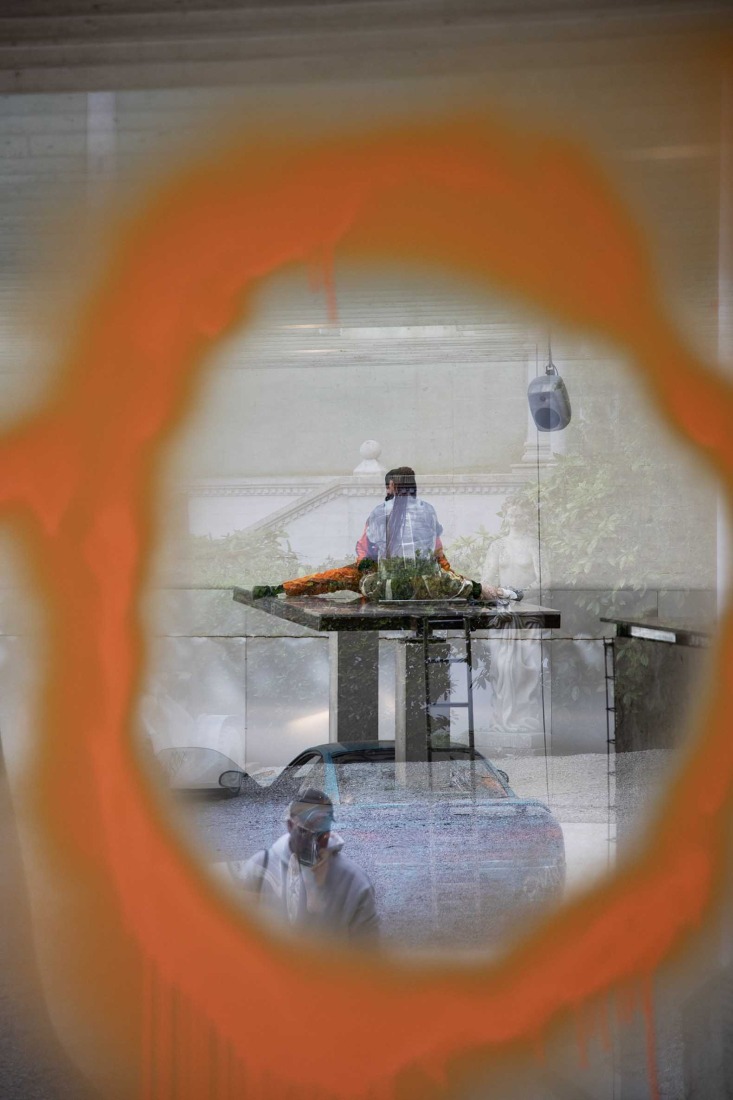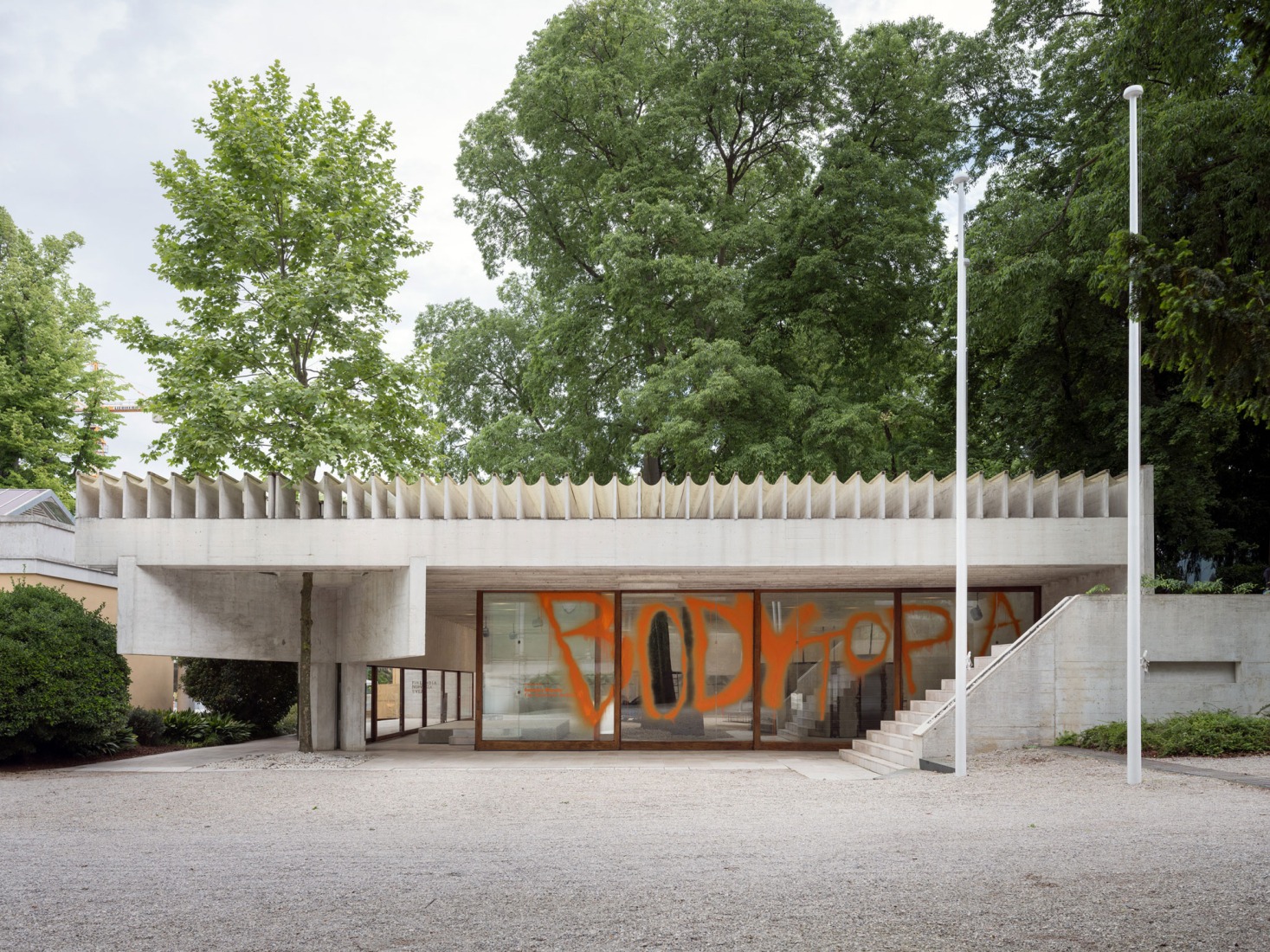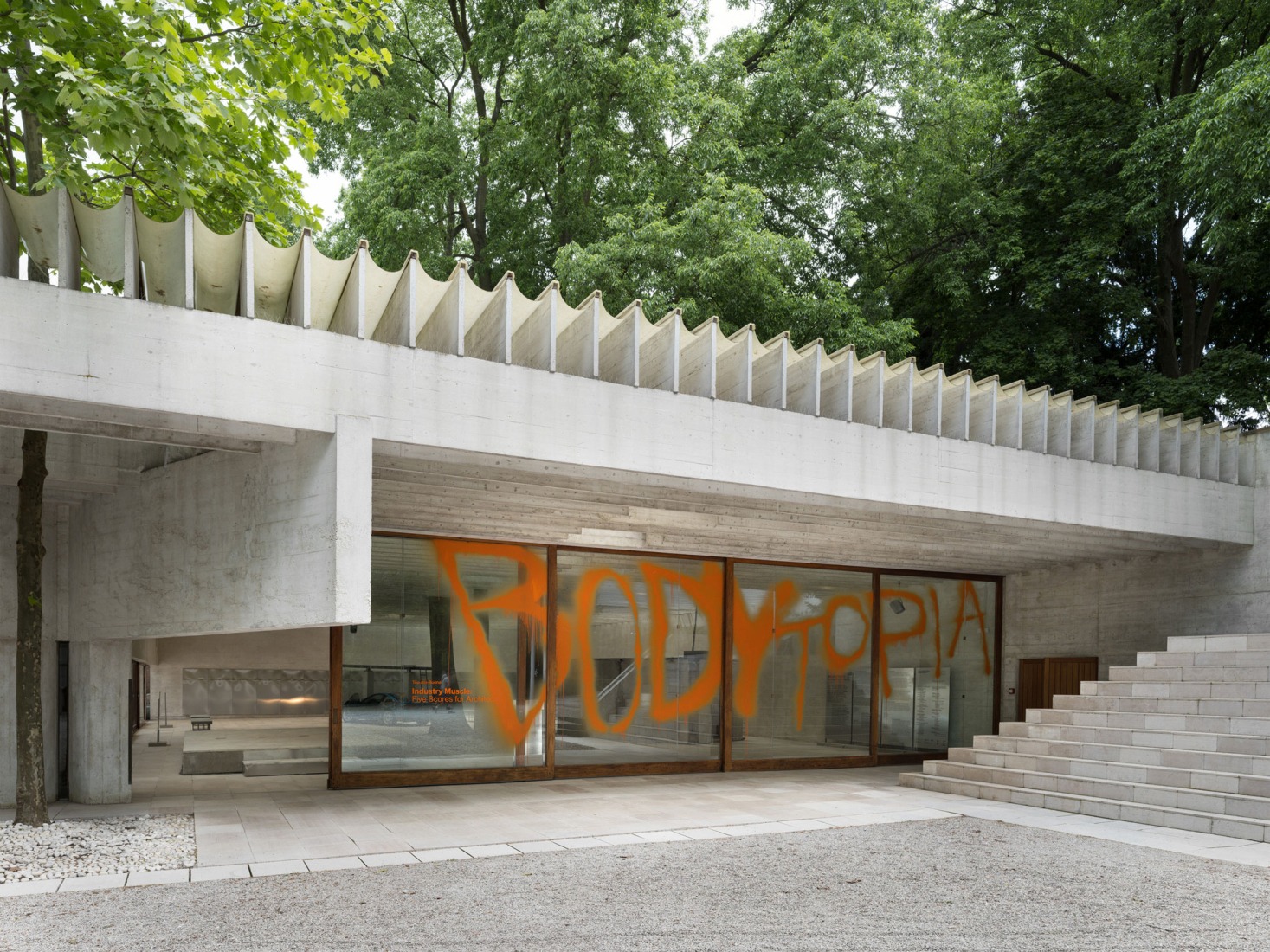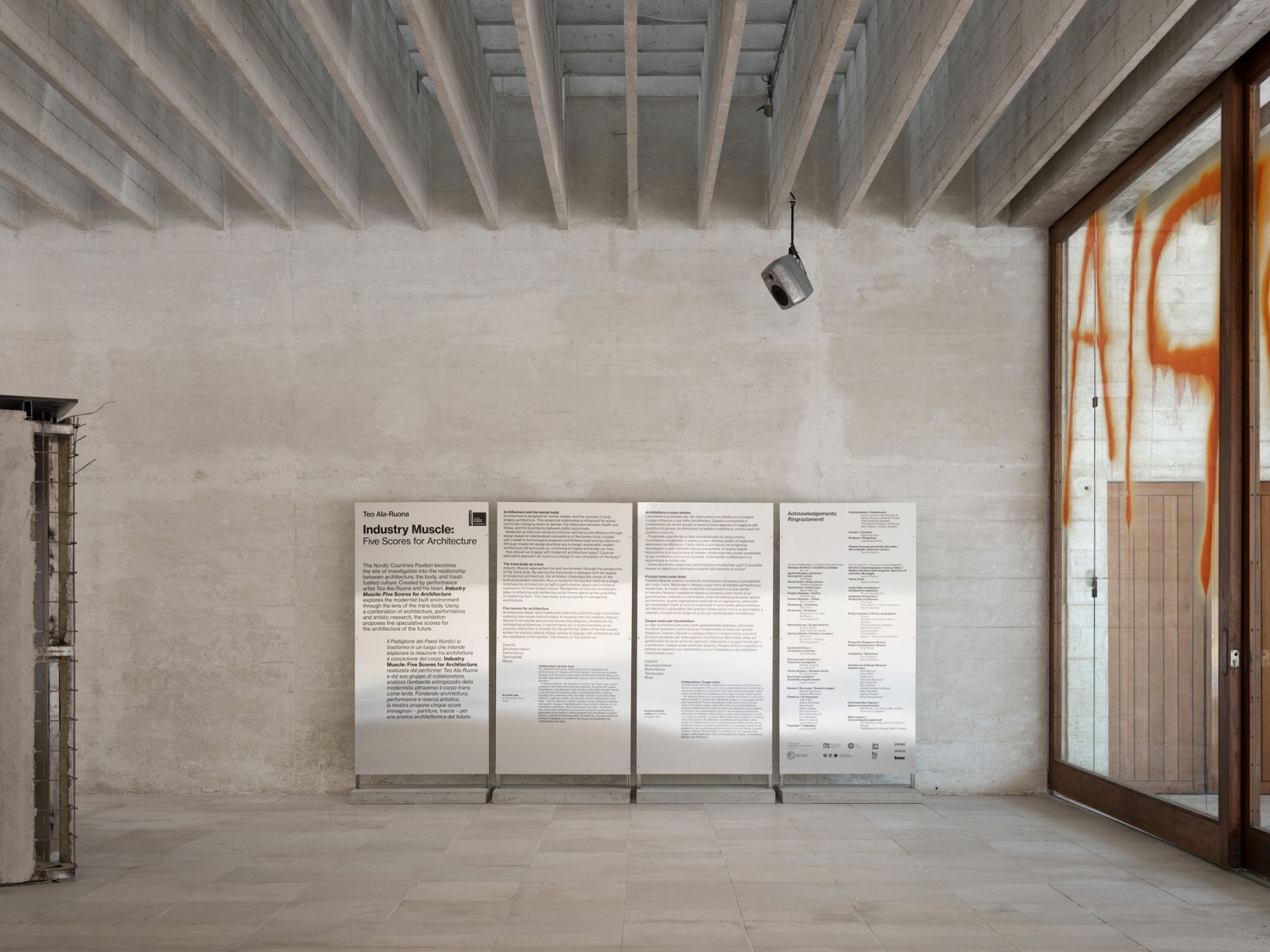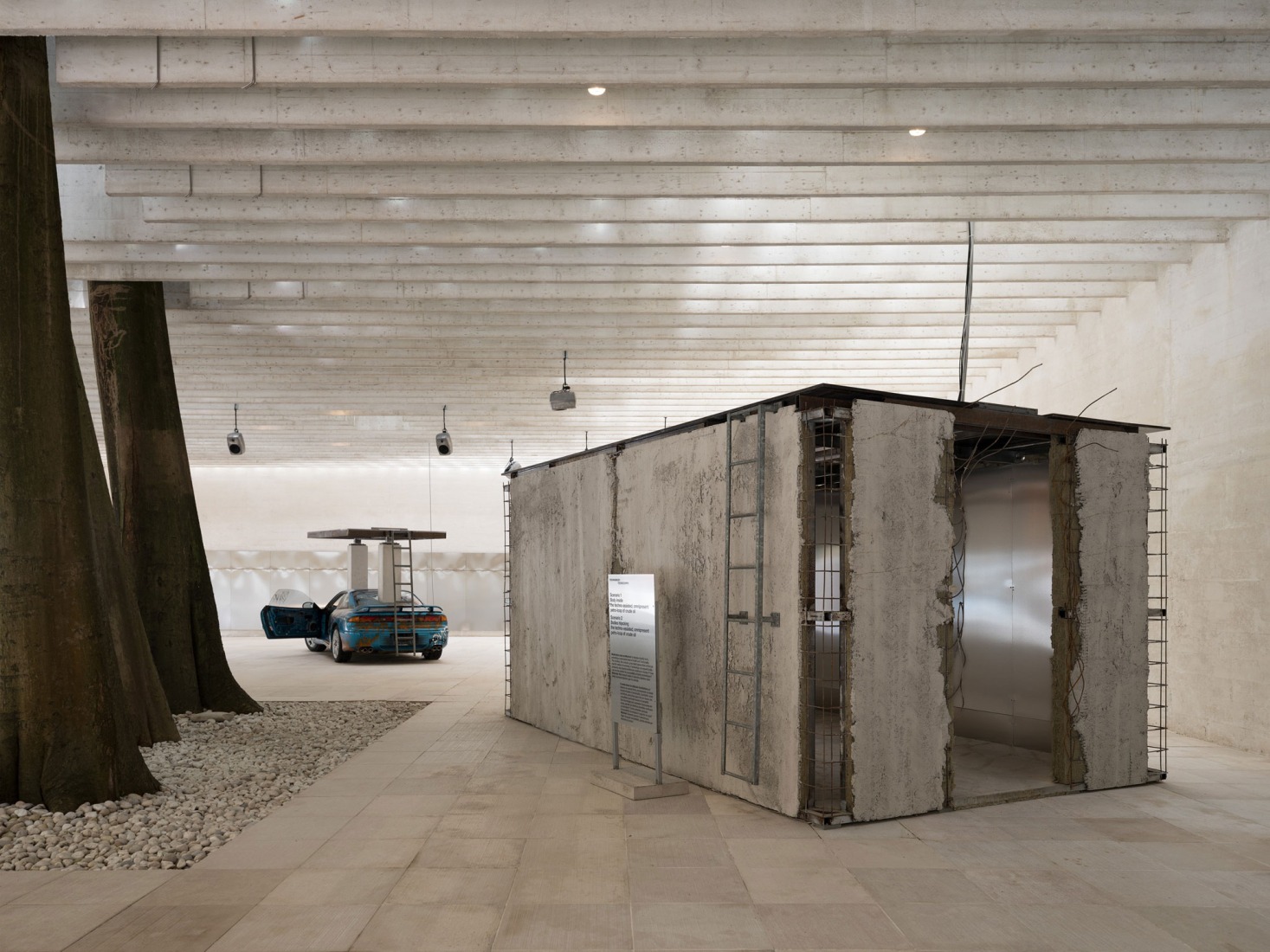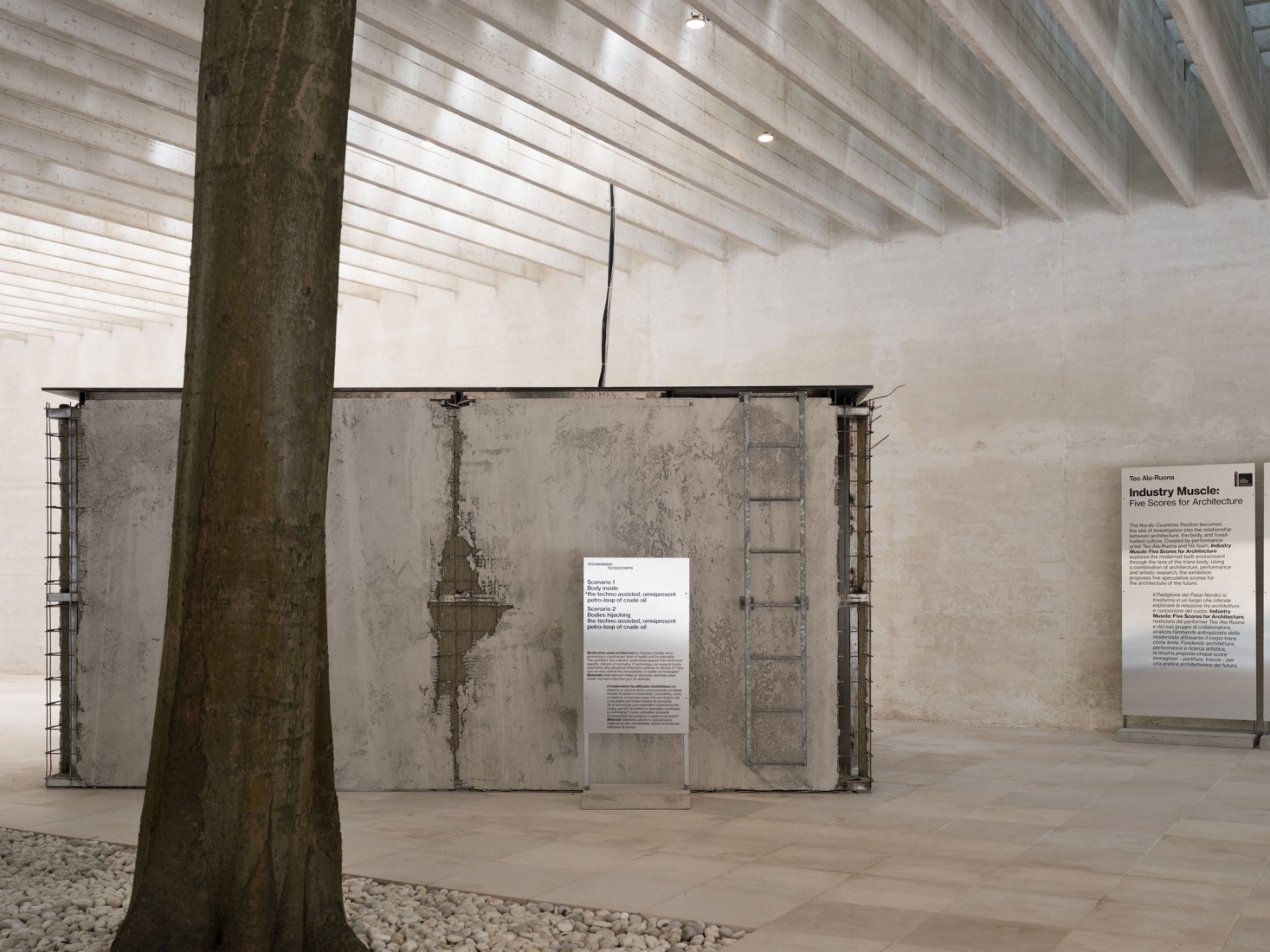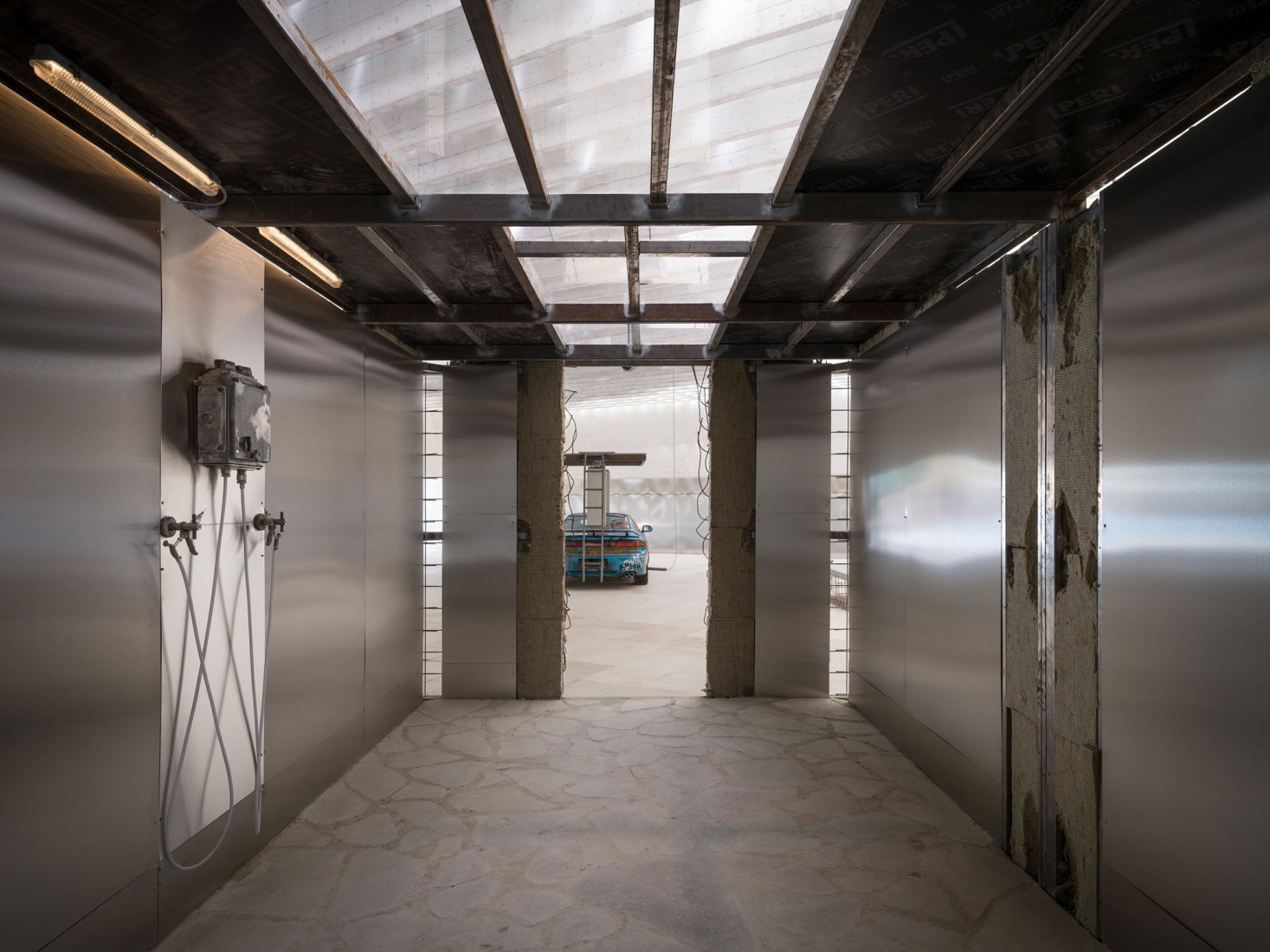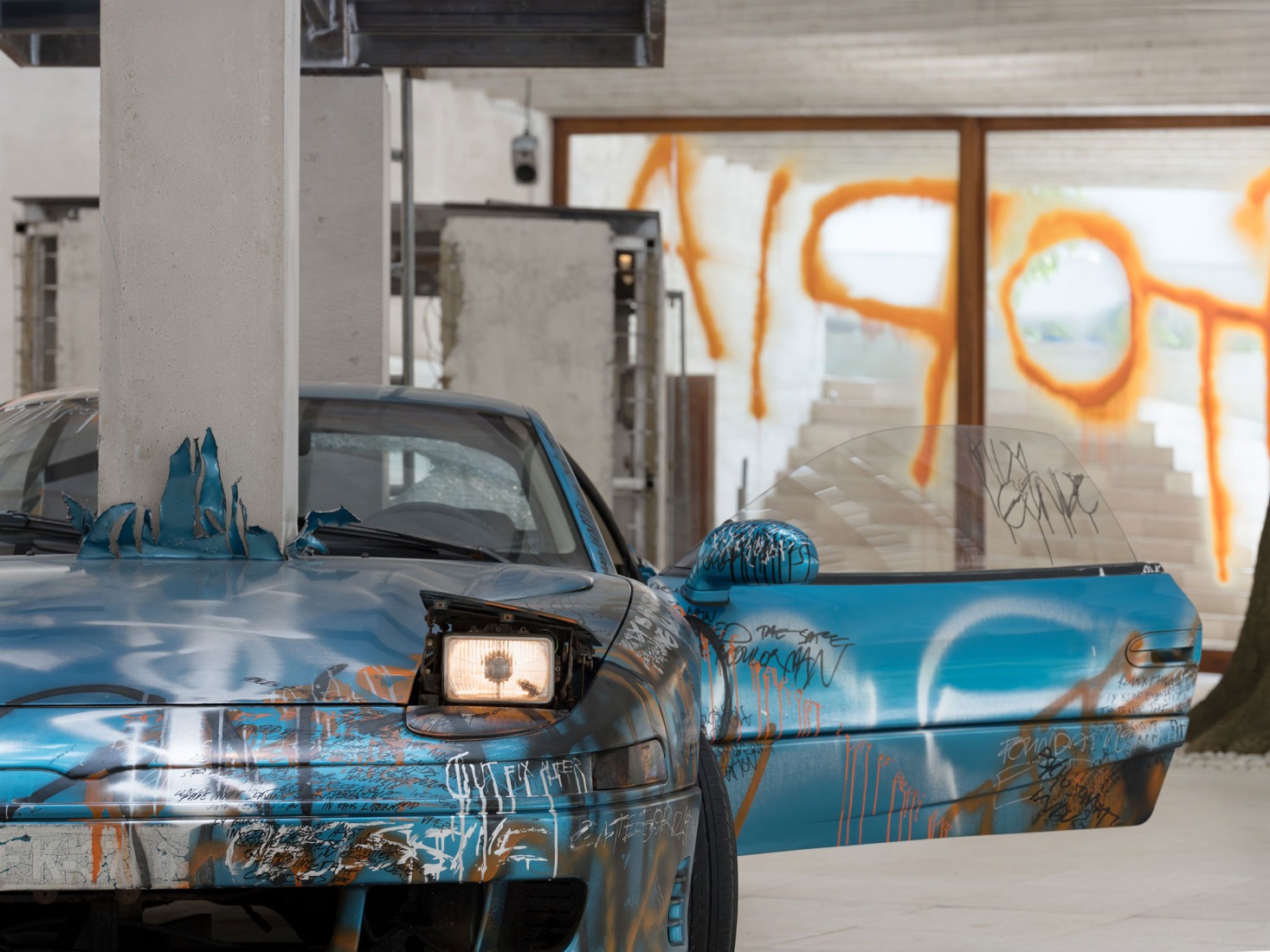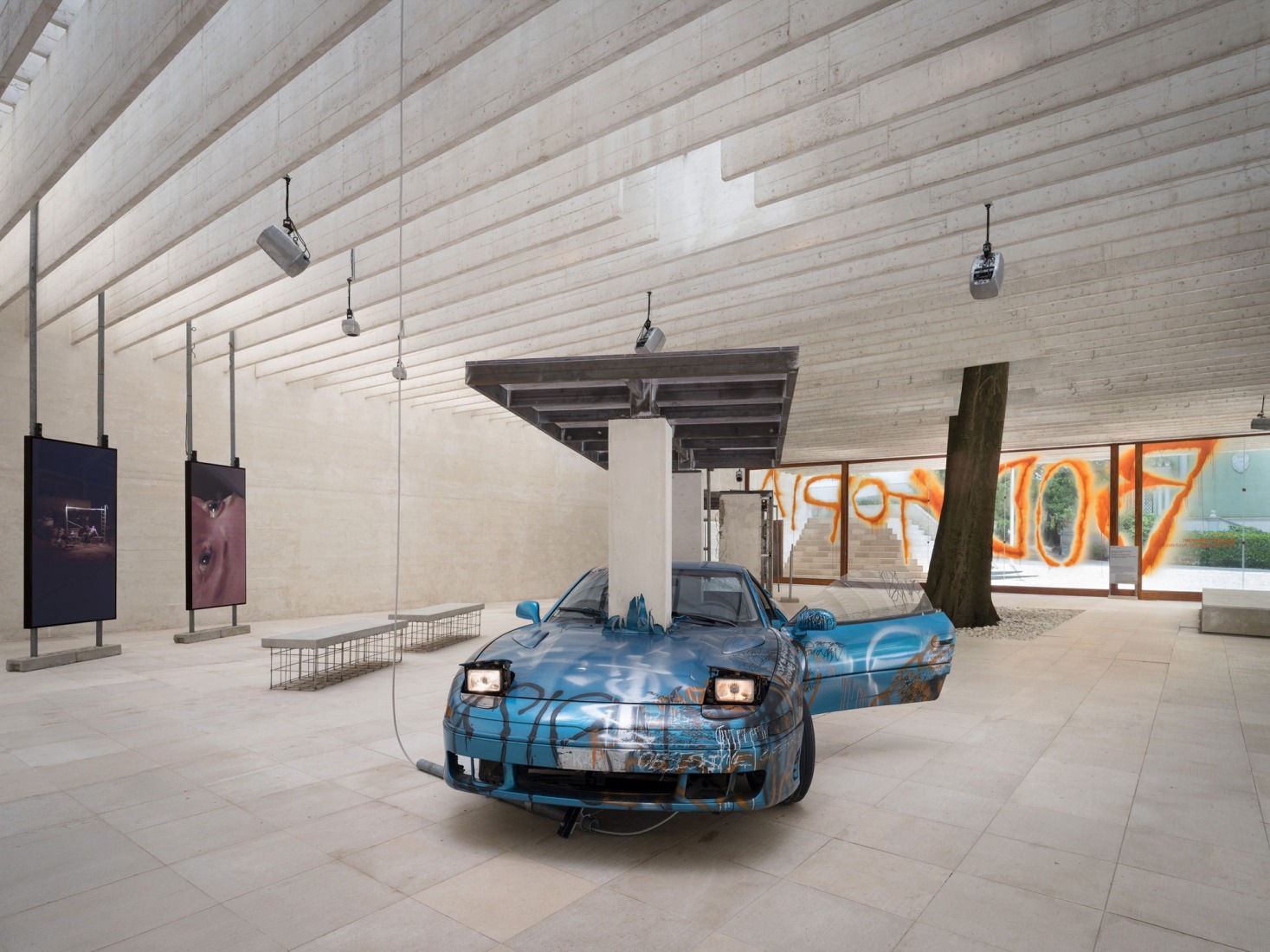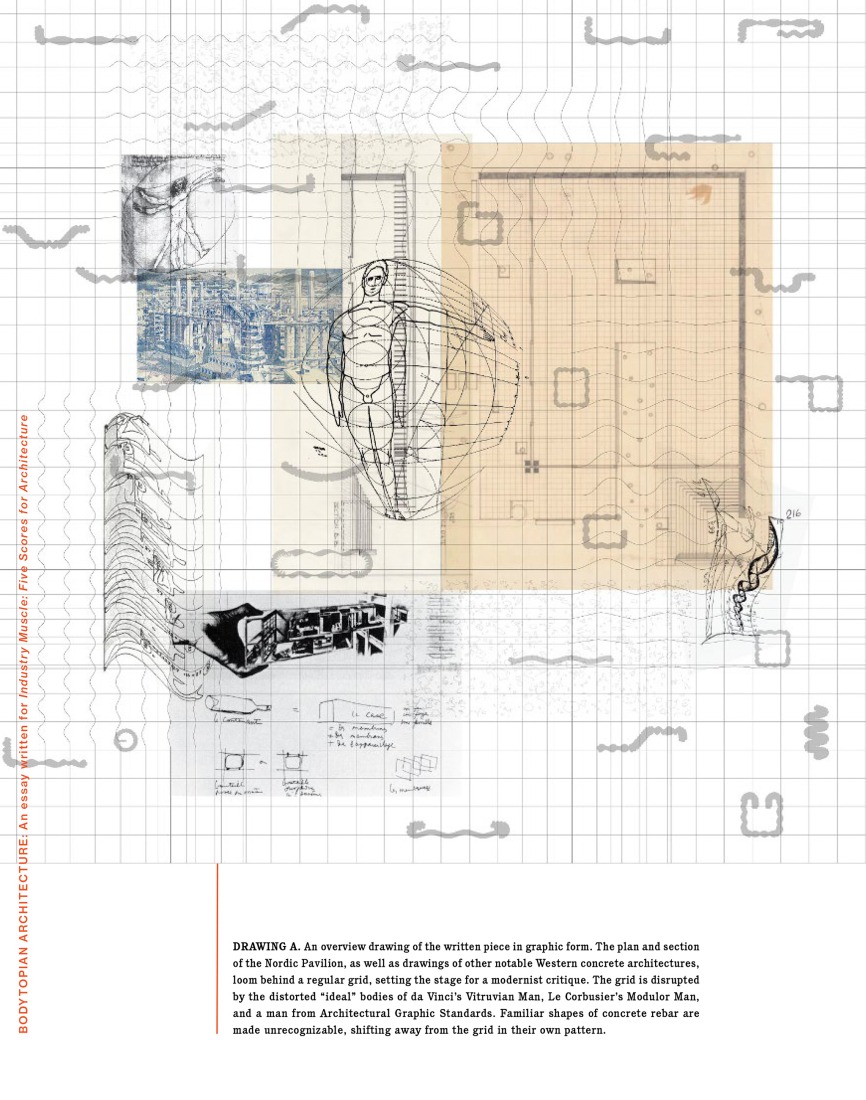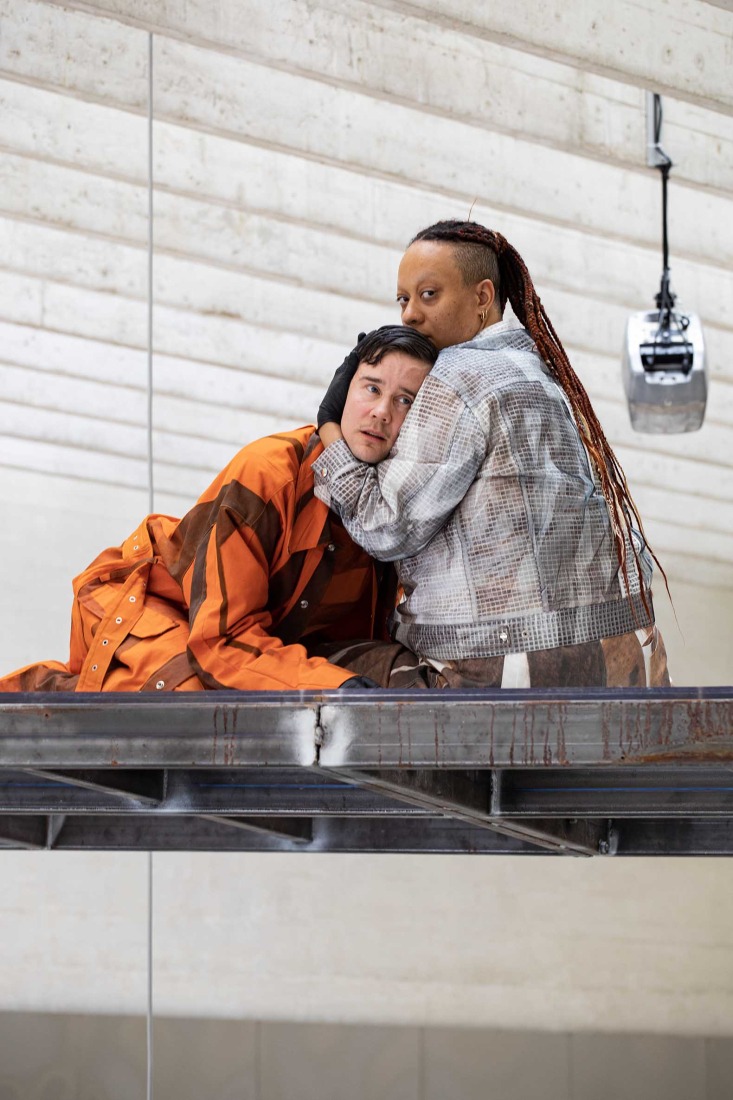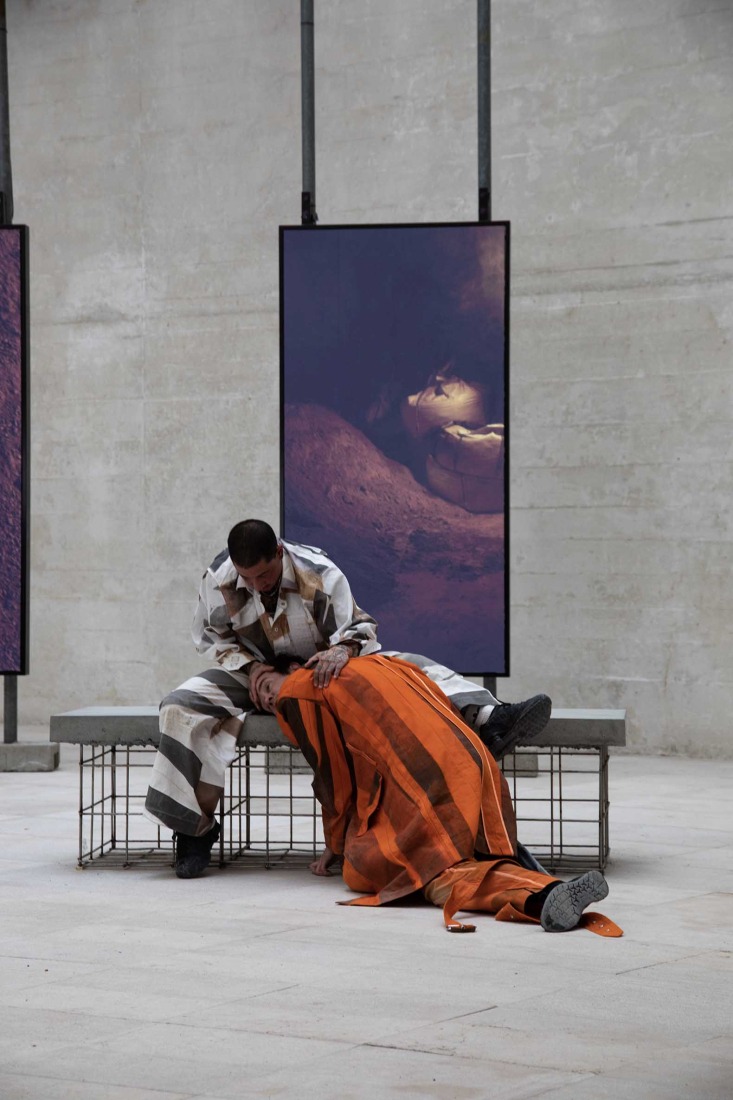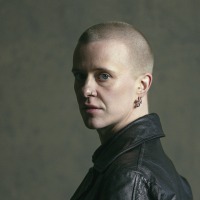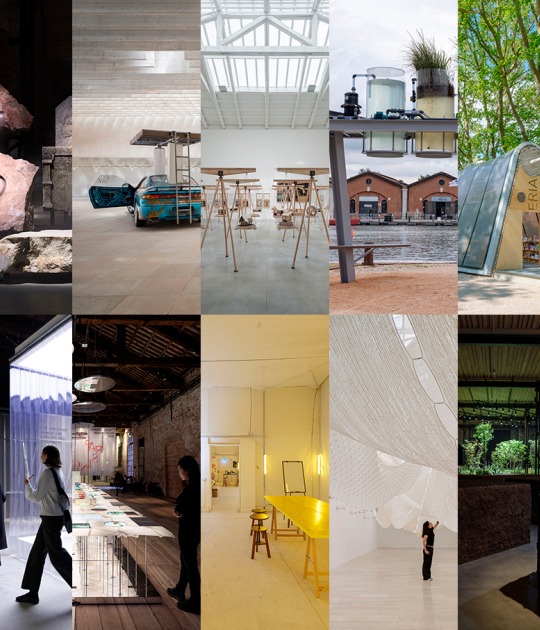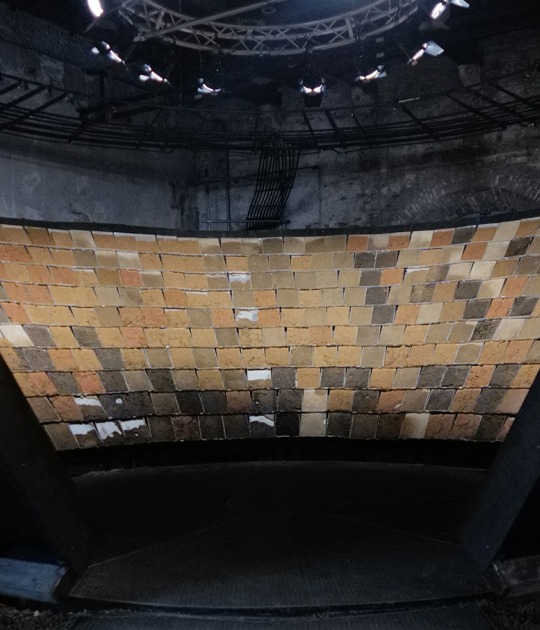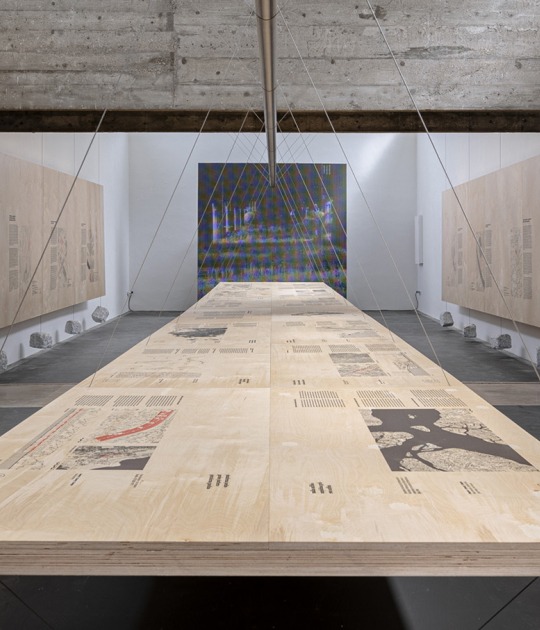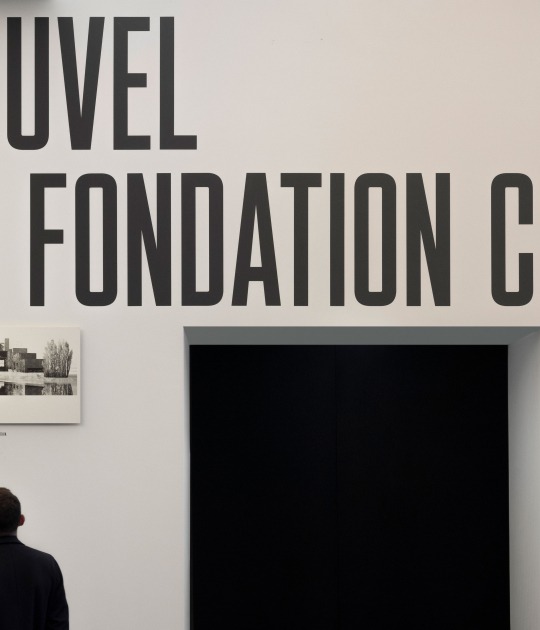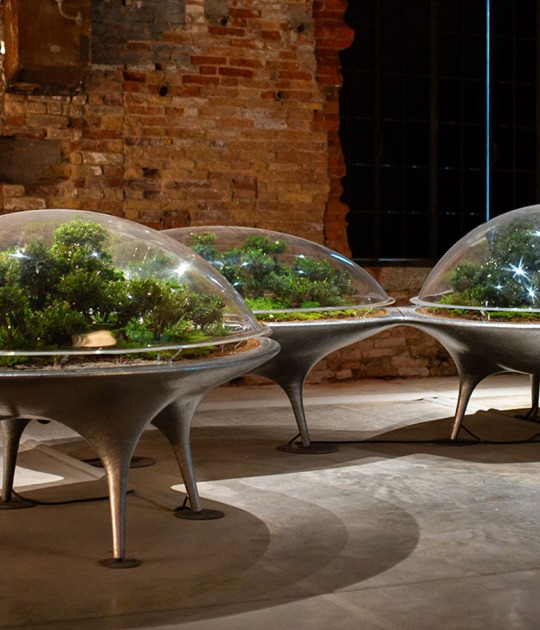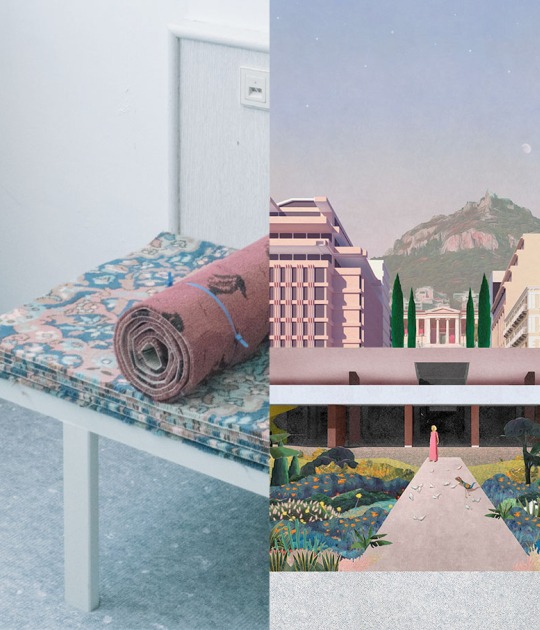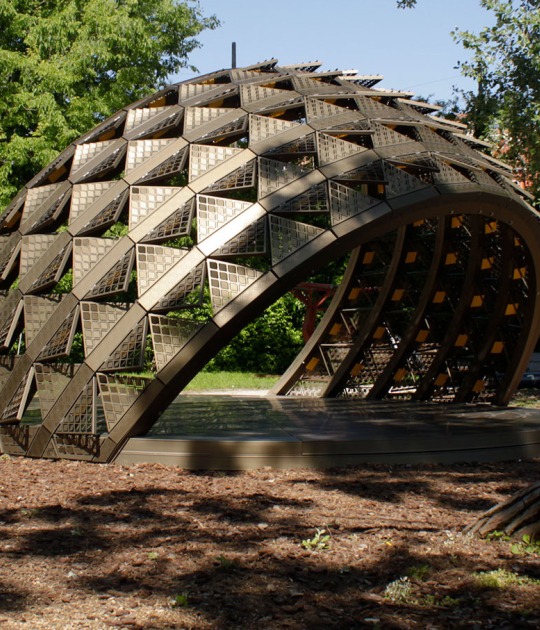The Nordic Countries Pavilion at the 19th International Architecture Exhibition at La Biennale di Venezia hosts an installation and new performance work by Finnish artist Teo Ala-Ruona and his multidisciplinary team.
Commissioned by the Architecture & Design Museum Helsinki and curated by Kaisa Karvinen, Industry Muscle: Five Scores for Architecture extends Ala-Ruona’s ongoing exploration of trans embodiment and ecology, now entering the realm of architecture.
This project views the trans body as a lens for rethinking modern architecture and the built environment. It engages in a critical dialogue with the iconic Nordic Countries Pavilion —designed by Sverre Fehn in 1962—juxtaposing its modern legacy with a speculative architectural approach that centers the trans body. The result is an inquiry into how architecture relates to bodily experience and ecological crisis.

Industry Muscle by Teo Ala-Ruona. Nordic Pavilion Biennale Architettura 2025. Kid Kokko, Romeo Rxman Gatt. Photograph by Venla Helenius.
Industry Muscle invites viewers to read the Pavilion—and architecture more broadly—as a site where sociopolitical norms shaped by fossil-fuel culture are performed and maintained. The exhibition's scenography positions visitors within an architectural environment where everyone is both observer and observed, engaged in acts of daily performance. Through Ala-Ruona’s interventions, the trans body disrupts this system, prying it open to expose the underlying framework.
The exhibition unfolds through five speculative “scores”—a term borrowed from performance art, where scores function as sets of instructions, tasks, or gestures for performers. In Industry Muscle, these scores operate as provocations for reimagining architectural practice, each rooted in a specific theme:
Impurity: Questioning the modern ideal of purity inherent in both architecture and lifestyle.
Decategorisation: Challenging practices based on categorisation and separation within the built environment.
Performance: Investigating how architecture and spatial design shape everyday performances of gender and identity.
Techno-body: Recognising the dynamic interaction between body, building, and technology, while advocating for bodily autonomy.
Reuse: Approaching the trans body as a form of reuse and a tool for ecological thinking.

Industry Muscle by Teo Ala-Ruona. Nordic Pavilion Biennale Architettura 2025. Kid Kokko, Romeo Rxman Gatt. Photograph by Venla Helenius.
Teo Ala-Ruona’s work moves across performance art, theatre, and choreography, with a core focus on trans embodiment and ecology. For Industry Muscle, he brings together a multidisciplinary team of collaborators: architect A.L. Hu; set designer and artist Teo Paaer; sound designer Tuukka Haapakorpi; dramaturge Even Minn; visual artist Venla Helenius; fashion designer Ervin Latimer; graphic designer Kiia Beilinson; and performers Kid Kokko, Caroline Suinner, and Romeo Roxman Gatt. Collaboration is at the heart of Ala-Ruona’s practice. Each team member contributes their own artistic voice to the exhibition—for example, the installations designed by artist and spatial designer Teo Paaer.
“Sverre Fehn’s Nordic Countries Pavilion is a canonical work of modern architecture that provides the perfect setting for Teo Ala-Ruona, an artist whose practice deals with the materiality of bodies and ecological questions. Combining Ala-Ruona’s practice with the architecture of the pavilion provides new insights about our built environment more generally, from the perspective of how the image of the body in fossil fuel-based culture has influenced architecture.”
The transformative potential of the stage and performance is central to Ala-Ruona’s work. In the field of performance art, bodily experience is studied, explored, and valued in a way that is meaningful also for contemporary architectural practice. I’m fascinated by the way Ala-Ruona has approached architecture by using the techniques of theatre, expanding his practice into architecture.”
Kaisa Karvinen, Curator of the Nordic Countries Pavilion on behalf of the Architecture and Design Museum Helsinki.

Industry Muscle: Five Scores for Architecture. Nordic Pavilion by Kaisa Karvinen, Architecture Biennale 2025. Photograph by Ugo Carmeni.
“Industry Muscle proposes a model for architecture grounded in my artistic practice and experience as both a trans person and a performance maker who uses the body as a site of research. This can be as fundamental as creating a sense of comfort in a space that doesn’t highlight the silhouette of the body, but instead offers an adaptive environment. This stands in contrast to the modern ideal of reduction, which is also reflected in the architecture of the pavilion.
The built environment is largely shaped by prevailing cultural norms. These norms play a significant role in how bodies are presented in everyday life, as well as in the ecological burden of the construction industry. Together with my team, I want to spark new conversations and explore how architecture can challenge the status quo.”
Teo Ala-Ruona.
The Nordic Countries Pavilion is commissioned by a partnership between the Architecture & Design Museum Helsinki (Finland), the National Museum of Norway, and ArkDes (Sweden). The leadership of the commission rotates among the institutions, and for the 19th International Architecture Exhibition, it is led by the Architecture & Design Museum Helsinki.
(*) The video was shot on location at a concrete factory in Helsinki, where the installation for the Venice exhibition was constructed using concrete, steel, and a sports car. In the video, we catch glimpses of the performance, featuring Teo Ala-Ruona, Kid Kokko, and Caroline Suinner. The video was produced by Cocoa and directed by Taito Kawata, whose previous work includes the Netflix series Dance Brothers.

